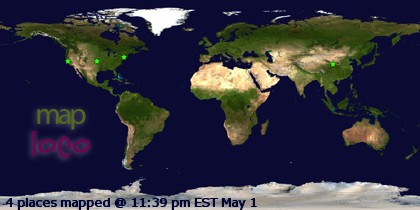 |
| Etherial |
 |
| Mystic swirls in the valley |
 |
| A wall of fog awaits |
 |
| Descending into the murk |
 |
| Tree islands in the mist |
 |
| Dramatic |
 |
| Grapes growing invisibly |
 |
| African dawn |
By 9:15 AM, the farms had stopped and we were into rangeland -- endless miles of scrub desert with cattle, sheep and goats.
 |
| Barren -- the start of weeks of it |
 |
| Endless dry |
 |
| Rock piles |
 |
| Visibility: 100 miles or more |
We stopped for bathroom breaks every couple of hours. One was at a little town that had a tourism info office (and restaurant) and in front of the place, dead old trucks. There are lots of dead old vehicles all over Africa.
 |
| What, a 1946? |
 |
| Desert scrub and mountains |
 |
| Drier mountains |
 |
| Mass lunch prep |
 |
| Many hands make light work |
 |
| Under the eucalyptus |
 |
| Blue Starling; pretty at first, robber barons after a while |
 |
| Bare rock, and now sand |
 |
| Copious water = copious people |
He did tell us the origins of the name of the town Springbok. When German settlers first arrived in the area, they watched a single herd of springbok take 7 days to pass through what is now the town. He told us sighting springbok in the area now was rare except on game farms and hunting ranches, explaining why we haven’t seem many.
From Springbok north past the copper mines of Okiep, things got a lot drier and a lot more desert-like very quickly. At times, it looked like we were driving through the tailings and spoils of a major mining operation.
 |
| Getting more barren |
 |
| Sand > grass |
 |
| Sand desert |
 |
| Descending through sandstone layers |
 |
| Where there is water... |
 |
| ...there is green and life |
 |
| Dead on the border. Middle of the bridge |
Once into Namibia, “really dry” becomes “excessively so”.
 |
| A stunning lack of anything |
 |
| Roads to nowhere |
 |
| Our cabin |
 |
| Inside. Africa has yet to discover Queen beds. |
 |
| The bathroom |
 |
| The pool |
 |
| Our cabin's on the left |
 |
| Stunning |
 |
| And the colours turn |
 |
| South Africa over there |
 |
| Tranquil |
 |
| Brilliant reds illuminate the rocks |
 |
| Glorious |
 |
| One of many birds fishing at sunset |
 |
| A sunset panorama from my balcony |
Dinner tonight was from our truck; sautéd chicken and mushrooms, rice, spicy mushroom cream sauce, steamed broccoli, cauliflower and carrots, and cole slaw. Excellent.
We had as an option tomorrow to go canoeing on the river early in the morning. When I say “early”, I mean it’s a 5:45 wake-up call. We were warned that we would get wet, would not really have access to cameras (which had to be sealed away in dry bags), and would probably need to shower on return – though we would need to check out of the room on our way TO canoeing at 7 AM. We liked the idea but decided to pass.
================
Today's Africa Travel Tip: Water
We are now in the desert. It’s dry here and there isn’t much water. I have ranted before (and will likely rant again) about how bottled water is one of the worst products on the planet from and environmental perspective, and generally a terrible waste of money.
Except here.
While South African tap water is fine, we have arrived at the first place where drinking tap water is not recommended. What to do? Well, you can buy bottled water (most of our touring companions bought 3-5 liters each today and yesterday).
Or you can do what we’re doing and use a SteriPen. This simple lightweight little dude is a UV treatment system; a miniature version of what I installed in my house after the 2013 floods. It treats ½ or 1 litre at a time, and takes ~90 seconds to make water parasite free. The system we brought has a 40 micron pre-filter, and is simple to use. Each set of charged batteries offers 200 treatments (and I have rechargeables), and the lamp handles 3,000 treatment cycles.
Plastic bottles are not recycled in Africa, by the way.


No comments:
Post a Comment